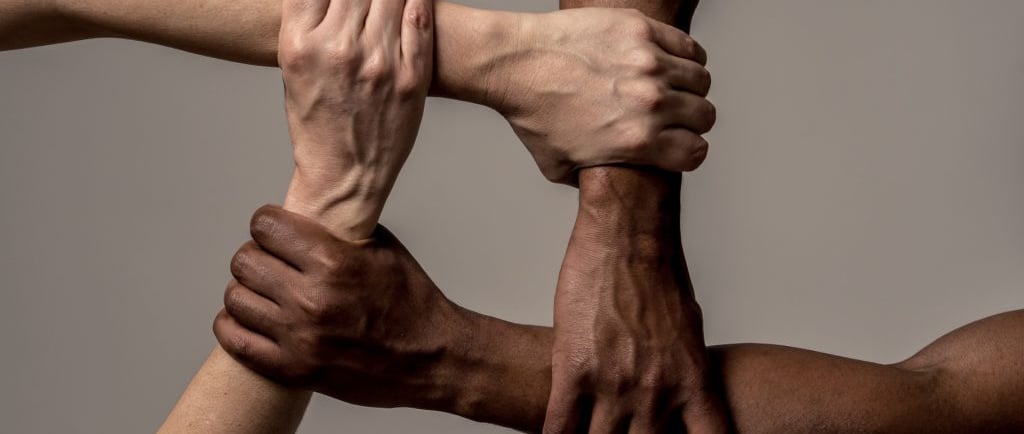WHAT LEGAL MECHANISMS CAN WE USE IN CASES OF DISCRIMINATION AND RACISM?
CRIMINAL LAW


Our Political Constitution of the State, in its initial articles, recognizes Bolivia as a State made up of Indigenous Native Peasant Nations and Peoples, as well as intercultural and Afro-descendant communities. All these groups together constitute our nation, established on pre-Columbian territory where various ethnicities and cultures coexisted. Over time, these groups unified within the same territory, giving rise to the current Plurinational State of Bolivia. This transformation enabled greater representation of all the cultures and ethnicities that form part of the country, achieved through constitutional reform and the enactment of new laws aimed at inclusion as a measure of cultural unification.
One of the most significant measures was the enactment of Law 045, the Law Against Racism and All Forms of Discrimination, which seeks to protect and safeguard the dignity of all peoples, based on the principles of interculturality, equality, equity, and respect. This law provides various mechanisms and procedurally competent instances to which one can turn, depending on the manner or situation in which the events occurred. These mechanisms are outlined in Article 12 of the law.
First, we have the Constitutional Route, which is used as a defense mechanism due to its effectiveness in restoring and protecting fundamental rights and constitutional guarantees. Then, we have the Administrative or Disciplinary Route, commonly used in public or private institutions and entities, which operate under internal regulations but in adherence to Law 045 and are obligated to inform the Public Prosecutor’s Office if an administrative or disciplinary sanction is determined. Lastly, there is the Criminal Route, through which the victim may go to the Public Prosecutor’s Office to file a formal complaint or submit a private accusation or lawsuit before a Sentencing Court if the offense is considered a private criminal action.
In such cases, it is essential to distinguish which of the two legal instances to approach by identifying the criminal offenses outlined in the Penal Code, based on the facts experienced by the victims. The conduct must be classified according to the corresponding criminal offense, as the initial articles are for public criminal actions, while the final article pertains to private criminal action.
The Penal Code contains Chapter VI: Crimes Against the Dignity of the Human Being, which includes five articles:
Article 281 Quinquies (Racism)
Article 281 Sexies (Discrimination)
Article 281 Septies (Dissemination and Incitement to Racism or Discrimination)
Article 281 Octies (Racist or Discriminatory Organizations or Associations)
These first four articles constitute public criminal actions and carry sentences of up to 7 years in prison, especially in the case of racism, with the possibility of harsher penalties depending on the circumstances and evidence presented during oral trial.
Lastly, we have Article 281 Nonies (Insults and Other Verbal Aggressions Motivated by Racism or Discrimination). This offense is characterized as a private criminal action and carries penalties such as community service for 40 days to 18 months and a fine of 40 to 150 days.
Therefore, it is essential to carry out a rigorous conceptual analysis to clearly distinguish the stipulated criminal offenses. Failing to do so could lead to misinterpretation of the reported facts, particularly between the crimes of discrimination, racism, and discriminatory insults. The latter is often circumstantial or incidental, whereas the former crimes involve a deeper, systematic intent to undermine a person’s dignity based on ethnic, cultural, economic, social, educational, or political background.
When analyzing such offenses, all applicable legal sources must be consulted, starting with Law 045, the Political Constitution of the State, jurisprudence, and the various international human rights treaties to which Bolivia is a signatory. Only by conducting such an analysis can true meaning be given to the complaints of individuals who feel that their dignity has been violated and who, in many cases, have found no response within the judicial system, often feeling forced to abandon their cause.
In conclusion, we can affirm that there are various legal mechanisms available to victims of discrimination or racism. By making use of these mechanisms, it is possible to prevent such acts from continuing in our society and to restore the violated rights of victims through proper legal advice, thereby stopping and sanctioning behaviors that harm and undermine human dignity.


Silvana Orieta Diaz Gutiérrez
Criminal Lawyer
